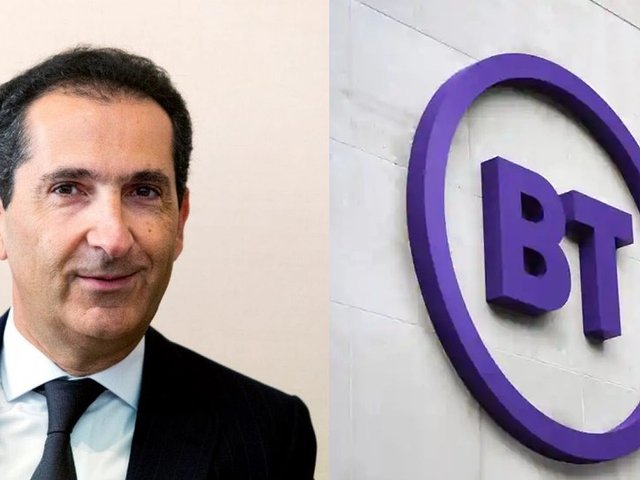Almost two weeks ago, Sotheby’s senior staff were warned that another round of job cuts was about to happen. Since then, news of major staffing losses, first reported by Puck, has circulated—but only now is the full scale of the cost cutting becoming apparent.
While Sotheby’s says the number of people who have lost their jobs is more than 100, a source close to the matter says this is a conservative estimate. “It has been a slowly rolling process that began in September and has culminated in the last two weeks,” they say. Several staff are understood to be moving into reduced advisory roles.
“Given the challenges the market has faced this year, we’ve taken a careful look at our business and staffing levels to perform well and grow going forward,” a spokesperson for Sotheby’s says.
The redundancies, which come after an earlier round of approximately 50 job cuts in London in May, are due to be pushed through by the end of 2024 and have mainly affected staff in the US, but also those in London, Europe and Asia. The source says Sotheby’s is attempting to slash $100m from the budget; the auction house denies this and declined to give a figure for the amount it is aiming to cut.
Departments most at risk
Bigger departments including Impressionist, Modern and contemporary art, have sustained “significant losses, in the form of senior roles”, according to the source. Large numbers of more junior personnel have also been affected. Regional offices have been closed across the world, including in Bangkok and a number of offices in Europe. “It’s really across the board in terms of people cuts, as well as significant budget reductions,” the source says.
Some smaller departments are understood to be at risk of closure, including Antiquities, Americana, Japanese and some areas of decorative arts. A spokesperson for Sotheby’s says: “Discussions are currently ongoing with these departments and none of them have been shut down.” The firm declined to comment on whether these departments would continue to operate after their next sales in the coming months.
The cuts come as Sotheby’s $1bn deal with the Abu Dhabi–based sovereign wealth fund ADQ was closed in November. A large chunk of that investment has been used to pay off some of the $1.65bn of fixed debt tied to Sotheby’s auction business. The French-Israeli telecoms tycoon Patrick Drahi acquired Sotheby’s for $3.7bn in 2019, bringing his company Altice’s debt totals to around $60bn.
The Art Newspaper understands that a cost reduction was promised as part of Sotheby’s deal with Abu Dhabi, where the auction house’s chief executive Charles F. Stewart was visiting on business when news of the job losses broke earlier this week. Stewart removed a number of comments under an Instagram post of his Abu Dhabi trip after several people questioned his absence in New York and handling of the matter.
Unlike in 2014, when the last round of major cuts was made at Sotheby’s, sources say there has been very little transparency or communication from senior management about the current process, with some accidentally finding out they have lost their jobs via condolence text messages from colleagues. The source with insider knowledge says: “It feels like there is no strategy. The company is in a state of freefall.” The Sotheby’s spokesperson says the decisions “have not been taken lightly and we are committed to ensuring a smooth transition for our employees”.
While a mandate to make the auction business leaner has driven some of the cuts over the summer and autumn, the source says the recent cuts “are focused on trying to reach lofty financial targets that are being set”.
They come at the end of another tough year for the market. In July, figures from London-based analysts ArtTactic showed that worldwide sales at Sotheby’s, Christie’s and Phillips slumped 27% in the first half of 2024. New York’s marquee sales last month were down an estimated 50% on the year before; the trade is now braced for the end of year results which are expected this week.
However, Sotheby’s issues appear larger than the current downward cycle in the market.
Within weeks of purchasing Sotheby’s in 2019, Drahi established a new company to complete a sale-and-leaseback transaction, releasing equity in the firm’s Bond Street headquarters in London, which was passed up a chain of companies. It is a model Drahi has also employed in New York and elsewhere. “All of the traditional real estate that Sotheby’s owns, whether it be Bond Street or York Avenue, has been completely stripped,” says the source.
According to the latest accounts filed on Companies House in December 2023, profits after tax for the UK arm of the company were just over £22m, while a £41m dividend was paid out. The Sotheby’s spokesperson says it is “a myth” that Drahi has taken any dividends out of Sotheby’s. “In fact, the opposite is true,” they say. “Mr Drahi has invested additional capital into the company without removing any of his investment.”
Introducing the new fee structure last year, which reduced buyers’ premium in favour of shifting more costs onto sellers, only amplified problems, insiders say. “Shifting the fees to consignors has made it incredibly hard to get business,” says one. “In order to get people in the door to buy you need property and you need the supply. If you're cutting off your supply, you’re not going to have the demand.” The Sotheby’s spokesperson says that supply “has been a challenge across the industry […] but we are honoured to have offered many of the greatest collections across the industry this year”.
While insiders say it appears that the bottom has been reached with this latest round of job cuts, it is not clear how long that will last. As the source says: “I think people are now just looking for some normalcy, but it’s a pretty sad future.”






